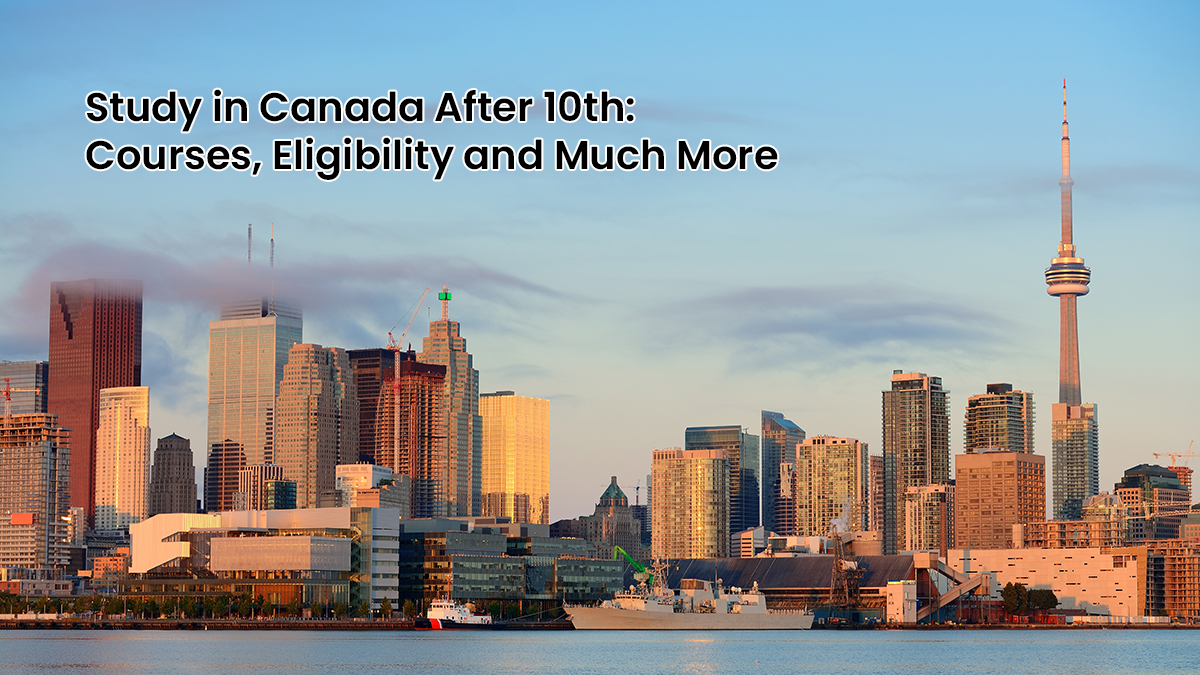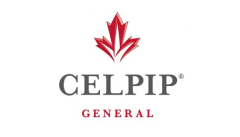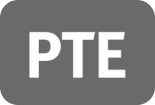Are you considering to study in Canada after completing your 10th class? Canada is known for its world-class education system, diverse culture, and vibrant communities, making it an attractive country for Indian as well as international students. In this guide, we’ll delve into the various aspects of studying in Canada after 10th grade, covering courses, eligibility criteria, and essential information to help you embark on this enriching academic journey.
Overview: Study in Canada after the 10th
|
Aspect |
Information |
|
Education Levels |
Primary (Grades 1-8), Secondary (Grades 9-12), Post-Secondary (Graduation and Postgraduate Degrees) |
|
Educational Institutions |
Approximately 15,000 primary and secondary schools. Internationally recognized universities in urban and rural areas. |
|
Degree Recognition |
Canadian degrees are globally recognized for their quality and credibility. |
| Bilingualism |
Canada is a bilingual country, offering education in English and French languages. |
| Funding for Education |
Government funding for religious schools in Alberta, Ontario, and Saskatchewan. |
| Designated Learning Institutions (DLI) |
Provinces designate schools enrolling international students as DLIs. A study permit requires an acceptance letter from a DLI. |
Why study in Canada after class 10th?
Studying in Canada after class 10th offers several compelling advantages:
1. Language opportunities
Canada provides fair opportunities for students to communicate in the English language.
2. Diversity and international community
Welcoming over 100,000 international students annually, Canada offers a holistic environment, especially evident in cities like Toronto with a substantial Indian immigrant population.
3. Safety and quality of life
Known for its safety and social progress, Canada maintains a low crime rate and offers a high quality of life.
4. Innovative research
Universities prioritize research, leading to groundbreaking discoveries in various fields such as disease prevention (HIV/AIDS, cancer), environmental sustainability, and more.
5. Teaching approach:
Professors encourage independent thinking through a blend of traditional teaching methods, workshops, assignments, projects, and group work, fostering a dynamic learning environment.
Eligibility requirements
- Humanities stream: A minimum of 65% or higher in Class XII.
- Science/Commerce stream: Typically requires 70-80% or higher in Class XII.
- Completion of specific grade levels equivalent to Canadian standards post 10th grade.
- Proficiency in English/French demonstrated through standardized tests like IELTS, TOEFL, etc.
- Submission of academic records such as marksheets, transcripts, or report cards from the previous school is crucial for assessment.
Admission process for Canadian high schools
Follow these points for proper admission procedure:
1. Contact the local school board (For public high schools)
– Reach out to determine the enrollment process.
– Expect an assessment to determine the appropriate grade level.
– Some schools offer language classes for English or French.
2. Direct communication with private high schools
– Contact the school’s admissions department directly.
– Inquire about requirements and the application process.
3. Check application deadlines
– Be aware of deadlines for both public and private schools.
– Ensure timely submission of your application.
Navigating the admission process for Canadian high schools involves proactive communication, careful planning, and meeting deadlines to prepare for your educational journey after completing the 10th grade.
Application process
1. Research and analyze:
- Analyze and research schools or universities aligning with your interests, courses, costs, and accommodation options.
- List down choices to find the best-suited institution.
2. Check eligibility criteria:
- Review eligibility criteria of selected schools or universities online.
- Note down requirements matching your preferences and academic goals.
3. Prepare the required documents:
- Gather essential documents: passport-sized photos, certified transcripts, TOEFL/IELTS scores, valid passport, medical report, and university application form.
4. Receive the offer letter:
- Upon approval, expect to receive an offer letter from the university.
- Keep both digital and hard copies for future reference.
5. Obtain study permit and TRV:
- Apply for a study permit from Citizen and Immigration (CIC) to pursue education in Canada.
- Additionally, secure a Temporary Resident Visa (TRV) for entry into Canada.
Documents required
Here’s a concise list of the essential documents required for studying in Canada after completing the 10th grade:
- Acceptance letter from your school or educational institution
- Valid travel documents and passport
- Proof of sufficient funds for tuition, living expenses, and return transportation
- Guardian requirements (if applicable)
- No criminal record certificate (police certificate)
- Medical certificate
- Student or education loan documents
- Bank statements
- Payment receipts for tuition and accommodation fees
Ensuring you have these documents in order and meet the necessary criteria will greatly streamline your application process for studying in Canada after completing your 10th grade. If you have any specific questions or need further details about any of these documents, feel free to ask!
High schools in Canada for international students
High schools in Canada for international students offer a diverse and enriching educational experience. Here’s an overview:
1. Programs and curriculum
Canadian high schools often offer a broad curriculum that includes core subjects like mathematics, sciences, languages (English and French), social sciences, and arts. They might also provide specialized programs such as Advanced Placement (AP) or International Baccalaureate (IB), catering to students seeking more challenging coursework.
2. Support services
Schools generally offer support services tailored to international students, including language classes, counseling, and guidance for adapting to a new educational system and culture. There may also be programs to assist with university admissions and career planning.
3. Diversity and inclusivity
Canadian high schools often celebrate diversity and inclusivity, welcoming students from various cultural backgrounds. This environment encourages cultural exchange and understanding among students.
4. Extracurricular activities
Schools usually offer a range of extracurricular activities such as sports, clubs, community service initiatives, and arts programs. These activities not only enrich the student experience but also promote social integration.
5. Quality education and facilities
Canadian high schools are known for providing high-quality education with modern facilities, well-equipped classrooms, libraries, labs, and technology resources.
List of public high schools
- New Brunswick French International Student Program
- Livingstone Range School Division
- Golden Hills School Division
- Gulf Islands School District
- Rocky Mountain School District
List of private high schools
- Elmwood School
- Hudson College
- Lakefield College School
- Bond Academy
- The York School
Courses in Canada after 10th
Canada provides a wide range of secondary-level courses for skill development and knowledge enhancement in various fields, including vocational options.
List of vocational courses after 10th in Canada
- Broadcasting and Journalism
- Business Administration
- Film Production
- Dental hygiene
- Design
- Environment
- Fashion Technology
- Graphic Design
- Language
- Health
- Hospitality management
Scholarships for studying in Canada after 10th
Here is the list of scholarships you can apply for:
- Conestoga College International Degree Entrance Scholarships
- NATA Business Scholarships
- MobilitySeeker Outdoor Sports Scholarship
- The SmoothMovers Scholarships
- BeArt Presets Academic Scholarships
These scholarships are available for students planning to study in Canada after completing the 10th grade, covering various fields from vocational to diploma courses.
Overall, studying in Canada after class 10th is a brilliant opportunity to explore the education system at such a young age. This experience will help you at a young age.
If you are struggling to get the right guidance, please do not hesitate to consult MSM Unify.
At MSM Unify, you can explore more than 50,000 courses across 1500+ educational institutions across the globe. MSM Unify has helped 1,50,000+ students achieve their study abroad dream so far.












